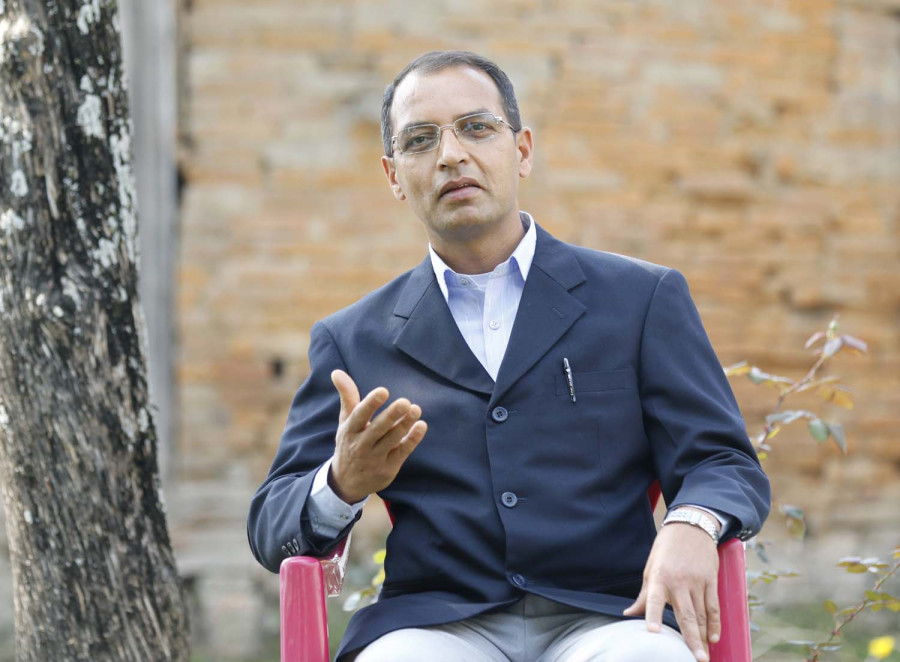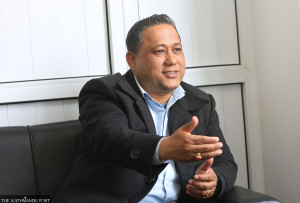Interviews
‘Regular justice system in play when transitional justice bodies are defunct’
Human rights and constitutional lawyer Raju Prasad Chapagain on ways to take the transitional justice process forward.
Binod Ghimire
Following Supreme Court’s decision to register writ petitions against Prime Minister and CPN (Maoist Centre) chair Pushpa Kamal Dahal relating to war-era atrocities, the government has rushed an amendment bill to the Enforced Disappearances Enquiry and Truth and Reconciliation Commission Act. The bill, like the previous one, has landed in controversy for its inclusion of several flawed provisions targeted at shielding perpetrators. As the government prepares to push the bill through the Parliament, the Post’s Binod Ghimire talked to human rights and constitutional lawyer Raju Prasad Chapagain, who has worked with different international human rights organisations and United Nations agencies, to learn of all the ways the bill is flawed and on ways to take the transitional justice process forward. Excerpts:
How do you evaluate the amendment bill to the Act related to transitional justice?
The bill largely resembles the one that the Parliament could not endorse last year. It has several problematic provisions that go against domestic and international laws and established practice of transitional justice. I find a problem in the very process of its registration. It was rushed to the Parliament, after the writ petitions were registered against Dahal, just to show to the court that the government was doing something.
If it was really concerned about justice delivery, it would have worked to build confidence among stakeholders through broad consultations. But the government didn’t consider that necessary. The bill retains all the problematic provisions except for allowing for the appeal of the Special Court’s decision before the Supreme Court and increasing the statute of limitation for prosecution from six months to a year.
One positive aspect of our transitional justice law is that it has never allowed blanket amnesty. The amnesty provisions are conditional.
Could you list the problematic provisions in the bill?
The problem starts with the definition of rights violation. Heinous crimes like “unlawful killings” in their entirety should have been listed as serious human rights violations. But the bill failed to do so. In addition to rape, serious forms of sexual violence too should have been taken as part of grave violation of human rights. Similarly, the bill considers only the crimes committed against civilians and unarmed persons as rights violations. But certain rights violations are not permissible whether or not a person is armed.
There is a problem in the definition of murder and torture as well. As per the bill, there will be no action against someone who has already faced action as per existing law. It is unclear whether this applies to those who have faced departmental action from the security force or the Nepal Army court.
The Special Court has the authority to hear cases relating to serious violations. But what happens to non-amnestiable cases then? The bill also suggests that the court must reduce the penalty, which also needs to be corrected. All these provisions support impunity.
Why do you think the government pushed more or less the same bill that faced much criticism last time?
From the very beginning, the political parties, mainly the Nepali Congress and the CPN (Maoist Centre), have adopted a conservative position on retributive justice under which perpetrators are prosecuted for their crimes. The CPN-UML has never made its position clear and it isn’t generous on reparative justice either. Neither has anything been done to assure non-repetition of violence, things like institutional reforms and vetting. However, those who had been booked have been rewarded by the government. Distributive justice that addresses the root cause of conflict is also not a priority. I don’t see distributive justice being discussed as a part of the transitional justice process.

Shortsightedness, dishonesty and a culture of impunity in our political leadership are to be blamed. There is no political willingness to conclude the transitional justice process the right way, something which has been manifested in the flawed bill registered in the Parliament. The government would have consulted the victims and other concerned before finalising the bill if it was serious about justice. Those in power must understand the rights of victims to seek justice. If they are not satisfied, their right to justice cannot be curtailed even after the conclusion of the transitional justice process.
The ruling Maoist Centre and its splinters have objected to the Supreme Court’s decision to allow the writs against Dahal to stand. They say conflict-era cases should only be dealt with by transitional justice mechanisms. Does their argument hold water?
The regular justice process and transitional justice process complement each other. The transitional justice mechanisms unveil the truth, recommend reparation and institutional reform, for instance. Their recommendations are implemented by other state organs. The court will hear the cases, the government will allocate budget for reparations while the Parliament will make laws or revise the existing one, if necessary, to implement the recommendations. They don’t substitute each other. It is wrong to argue that the Truth and Reconciliation Commission and the Commission of the Investigation on Enforced Disappeared Persons can handle all war-era cases of atrocities.
It is natural for the victims to seek redress through the regular justice system when the transitional justice mechanisms are defunct even as the political leadership has shown no willingness in justice-delivery in the past 16 years. The judiciary can intervene and ask for criminal investigation, not just in Dahal’s cases but also in others if the transitional justice mechanisms continue to remain defunct and be shadowed by political parties.
The court has made similar rulings in the case of Maina Sunuwar and Agni Sapkota, among others. The statement of various Maoist outfits objecting to the Supreme Court’s decision shows they don’t want to follow the judicial process. Attempts have been made to close the doors for prosecution, which is a huge challenge for the transitional justice process.

But there are also arguments that there is no point having a transitional justice system if criminal prosecutions are done as per the existing laws.
It is accepted that amnesty is permissible in some criminal acts under transitional justice. There can be flexibility in determining sentences even in cases of serious rights violations. This is done to incentivise the perpetrator to reveal truth, as establishing truth is one of the important pillars of the transitional justice process. Prosecution is not possible without establishing truth. Some flexibility is adopted to encourage the revelation of truth. However, it is wrong to argue that transitional justice is entirely different to the criminal justice process.
I also see a problem in the understanding of reconciliation. While it is true that transitional justice also is a reconciliatory process, it would be wrong to say the perpetrator gets amnesty if the victim wishes. In our case, reconciliation has been an individual process but in principle it is about social reconciliation.
The bill gives just two years to the commissions to investigate close to 70,000 complaints. Is it possible?
There is a wrong perception that all the complaints need to be investigated with equal scrutiny. That may not be possible. The truth commission must have started investigation with the cases whose truth has been established. The National Human Rights Commission, the Office of the United Nations High Commissioner for Human Rights and the Informal Sector Service Centre (INSEC) among others have investigated several cases and established the truth to an extent. The commission could have completed hundreds of investigations had they relied on the investigation done by other agencies.
Similarly, clustering is another way of investigation. All the cases, for example, related to Bhairabnath Battalion should be investigated as one. There could be close to 1,000 cases related to Bhairabnath. One or multiple army officers could be prosecuted for the atrocities in the battalion. The same applies with the Madi case, where the then Maoist ambushed a passenger bus and Chisapani Army Barrack. However, in cases of enforced disappearances every individual case needs to be investigated to ascertain the whereabouts of the victims. This is how the investigation is done elsewhere. However, it needs to be ensured that the perpetrators are held accountable and there is no amnesty in the cases of serious violations of human rights. There is a flaw in the way the two commissions started the process for investigation without clustering the cases.
What is the way ahead?
The political leadership must demonstrate the will to resolve the process keeping in mind that it is not just a domestic issue but one with universal jurisdiction. The bill must be revised correcting the problematic provisions before it gets through the Parliament. Conflict victims are frustrated due to the delay in justice. The state must make a public apology for the delay and express commitment to expedite the transitional justice process. A blueprint on how the process moves ahead must be made public and the victims taken into confidence. When the Act is amended, capable people with high integrity must be appointed in the two transitional justice commissions. There is still room to get the derailed process back on track.




 8.12°C Kathmandu
8.12°C Kathmandu










%20(1).jpg&w=300&height=200)

